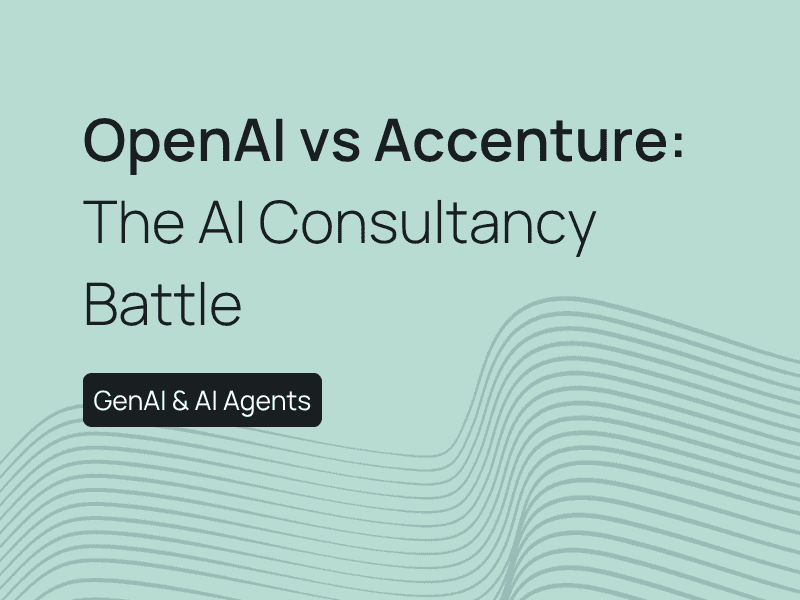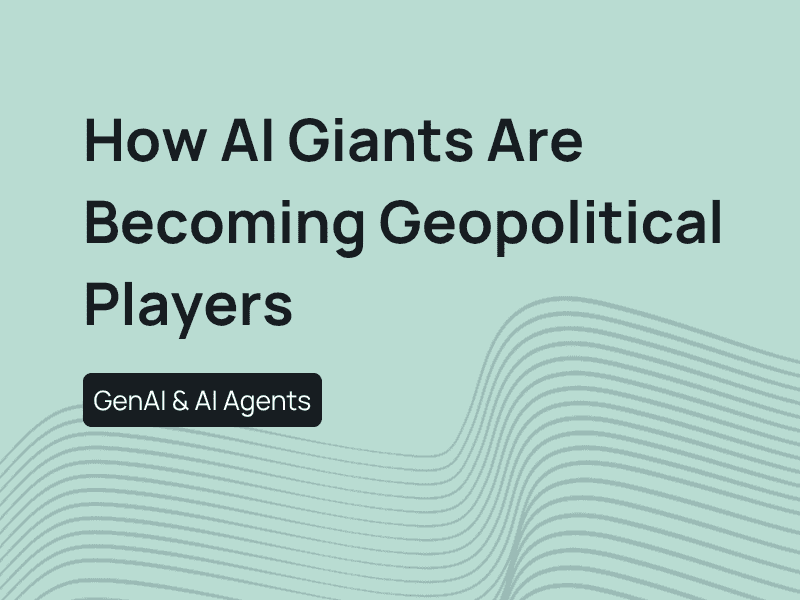Artificial intelligence has long thrived on data centralization, massive datasets pooled into centralized servers, powering increasingly sophisticated models. But as privacy regulations tighten, data volumes explode, and edge devices become more capable, a new paradigm is emerging: federated AI.
Federated AI allows organizations to train machine learning models across decentralized data sources, like smartphones, hospitals, or corporate silos, without ever moving the data itself. This approach preserves privacy, reduces latency, and enables collaboration across data-rich environments that were previously off-limits.
Far from being a niche research concept, federated AI is rapidly becoming a foundational layer in the next generation of intelligent systems. As it matures, it is carving out a significant position within the AI landscape on track to become a $10 billion market subset by the end of the decade.
Overview of Federated AI
To define the concept with simpler words, Federated AI is a way to train artificial intelligence without moving data around. Instead of collecting data in one place, the AI model learns from data where it’s already stored, like on smartphones, hospital servers, or company systems. Only the model updates are shared, not the raw data. This helps protect privacy, reduce risk, and still allows companies to build powerful AI systems by learning from many different sources at once.
In traditional machine learning, data from different sources is collected and stored in a central location. The AI model is then trained using all that data in one place. This can raise privacy concerns, create security risks, and require heavy data transfers.
Federated AI works the opposite way. The data stays where it is—on devices or local servers—and only small updates to the model are sent back. This keeps sensitive data private, reduces the need for large data transfers, and makes it easier to work across different organizations or systems.
Federated AI by the numbers
The global federated learning market is projected to reach $10 billion by 2030, growing from an estimated $200–300 million. With a compound annual growth rate of 45–50%, federated AI is expanding at nearly twice the pace of the broader AI market, which grows at around 20–25% CAGR.
More broadly, federated AI addresses a key bottleneck in enterprise AI: over 70% of organizational data remains untapped due to privacy concerns or operational silos. By enabling AI models to learn from data without moving it, federated AI is unlocking new value from previously inaccessible datasets.
Key sectors leading adoption
Federated AI is gaining traction across industries where data privacy, regulatory compliance, and decentralized data environments are critical:
Healthcare - Around 30% of federated AI pilots today are focused on hospitals or medical research; training models on medical imaging, diagnostics, and patient outcomes without transferring sensitive data. This allows for large-scale collaboration across institutions while staying compliant with regulations like HIPAA and GDPR.
Finance - Banks, insurers, and fintech platforms are adopting federated AI to enhance fraud detection, credit scoring, and anti-money laundering efforts. It enables these organizations to collaborate on model development without sharing proprietary or customer data, reducing risk while improving accuracy.
Telecom - Leading telecom providers are using federated learning to personalize services, improve predictive maintenance, and optimize network performance—all directly on user devices or at the network edge. Minimizes latency and protects user privacy.
Mobility & Automotive - Federated AI is powering innovation in connected cars and autonomous vehicles by enabling them to learn from edge data—such as driving behavior, sensor input, and traffic patterns—without centralizing sensitive or location-specific information. Which supports faster model updates and safer decision-making.
Investment Thesis: Why Now?
Federated AI is at a pivotal moment, moving from research to real-world deployment, and presents a compelling case for early investment. Several factors are aligning to make this the right time for private equity to enter the space:
Technological Readiness - Open-source frameworks like TensorFlow Federated and PySyft have matured significantly, lowering the barrier to entry for startups and enabling faster product development and deployment across industries.
Scarcity Premium - The number of scalable, commercial-ready players in the federated AI space remains limited. This scarcity offers investors a rare early-mover advantage, with the potential to back category leaders before the space becomes crowded.
Strategic Relevance - Federated AI sits at the intersection of three high-priority areas for enterprise and government buyers—artificial intelligence, cybersecurity, and data compliance. Its relevance will only grow as regulations tighten and the demand for responsible AI increases.
Exit Potential - Major technology firms in cloud infrastructure, AI platforms, and cybersecurity are actively seeking strategic acquisitions to expand their privacy-preserving AI capabilities. Federated AI startups represent attractive targets for these buyers, increasing the likelihood of strong exit multiples.
Challenges and risks
While the potential of federated AI is significant, investors should be aware of the challenges that come with backing an emerging technology. The federated learning ecosystem is still fragmented, with competing protocols and limited interoperability across platforms. This lack of standardization can slow adoption and complicate integration with enterprise systems. In terms of model performance, federated models may sometimes underperform compared to those trained on centralized data due to issues like uneven data distribution, limited bandwidth, or device variability. Closing this performance gap remains an active area of research.
Regulatory uncertainty is another factor. Although federated AI is designed to enhance privacy, regulations in many jurisdictions are still catching up to the technology. Ambiguities in data governance, cross-border data flows, and auditability can pose compliance risks for adopters. Finally, there is a talent shortage: expertise in federated systems design, privacy-preserving machine learning, and secure aggregation techniques is scarce, which may limit the scalability of early-stage companies in the space.
The bottom line
As enterprises grapple with increasing pressure around data privacy, regulatory compliance, and distributed infrastructure, federated learning is emerging as a key enabler of AI at scale. With accelerating adoption, minimal competition, and cross-industry strategic value, this $10B market segment presents a timely—and overlooked—investment opportunity. Early backers can secure a stake in the foundational infrastructure of next-gen AI.
Published by Samuel Hieber


